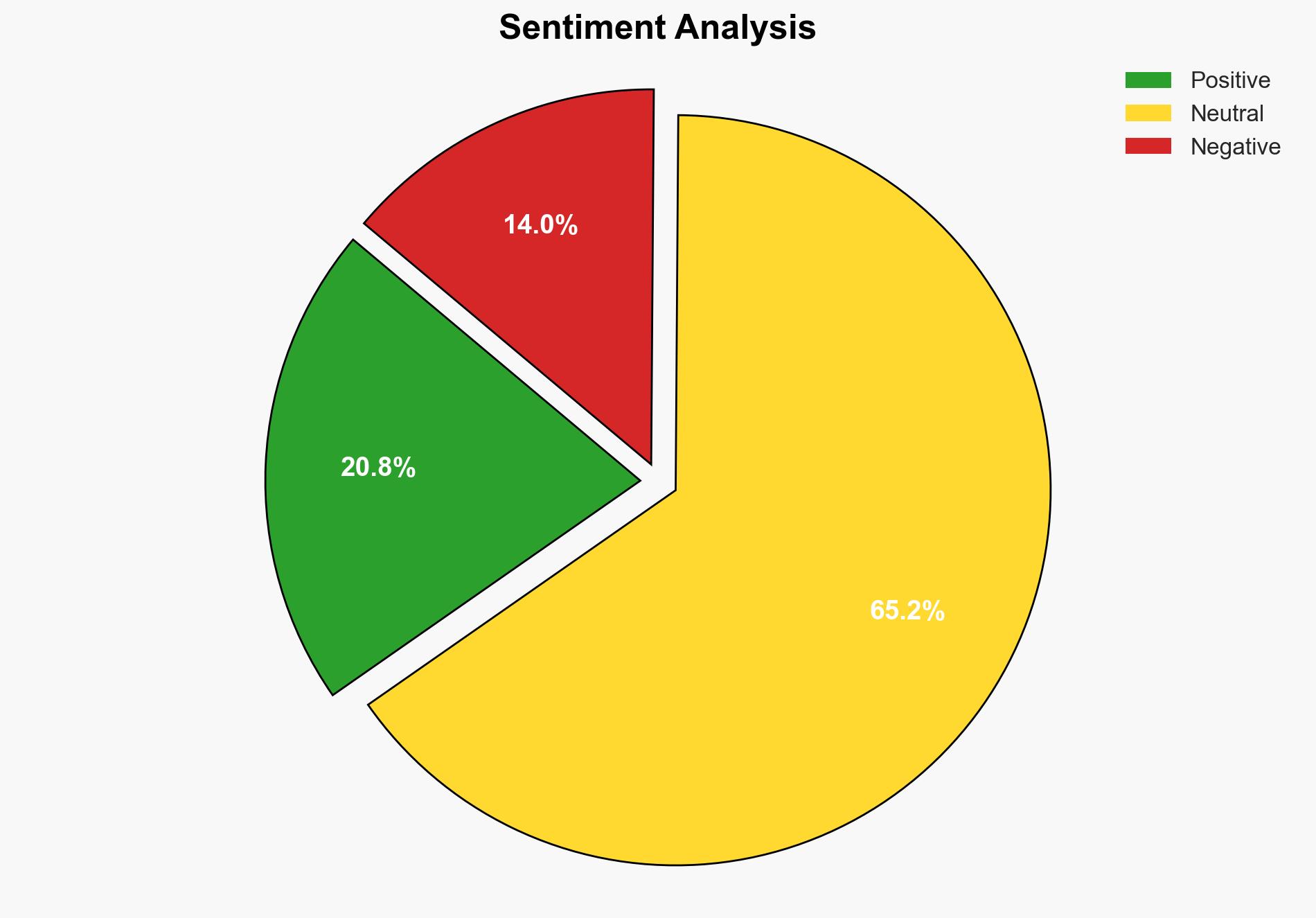Trump signs executive order to end collective bargaining at agencies involved with national security – NBC News
Published on: 2025-03-28
Intelligence Report: Trump signs executive order to end collective bargaining at agencies involved with national security – NBC News
1. BLUF (Bottom Line Up Front)
The executive order signed by Donald Trump aims to terminate collective bargaining rights for federal labor unions within agencies involved in national security. This move is positioned as a measure to enhance operational efficiency and protect national interests. However, it has sparked significant opposition from union leaders, who view it as an attack on workers’ rights. Legal challenges are anticipated, potentially impacting the implementation timeline and effectiveness of the order.
2. Detailed Analysis
The following structured analytic techniques have been applied for this analysis:
General Analysis
The executive order affects various federal agencies, including those responsible for defense, energy, and homeland security. The rationale provided by the administration emphasizes reducing union influence to prevent obstruction in managing agencies critical to national security. Union leaders, such as Everett Kelley and Liz Shuler, have condemned the order, labeling it as punitive and retaliatory. The American Federation of Government Employees is preparing legal action, indicating a prolonged legal battle.
3. Implications and Strategic Risks
The termination of collective bargaining rights poses several strategic risks:
- Potential disruption in agency operations due to workforce dissatisfaction and legal battles.
- Increased tension between the federal government and labor unions, potentially affecting morale and productivity.
- Legal challenges may delay or alter the implementation of the executive order, impacting its intended objectives.
The move could also set a precedent for future actions against unionized labor in other sectors, influencing regional stability and economic interests.
4. Recommendations and Outlook
Recommendations:
- Engage in dialogue with union leaders to address concerns and mitigate potential disruptions.
- Consider phased implementation to allow for adjustments based on legal outcomes and stakeholder feedback.
- Enhance communication strategies to clarify the objectives and benefits of the executive order to the workforce.
Outlook:
Best-case scenario: The executive order is implemented smoothly with minimal legal challenges, leading to improved agency efficiency.
Worst-case scenario: Prolonged legal battles and workforce unrest result in operational disruptions and decreased morale.
Most likely outcome: Legal challenges delay implementation, requiring adjustments and negotiations to reach a compromise.
5. Key Individuals and Entities
The report mentions significant individuals and organizations:
- Donald Trump
- Everett Kelley
- Liz Shuler
- American Federation of Government Employees
- AFL-CIO




